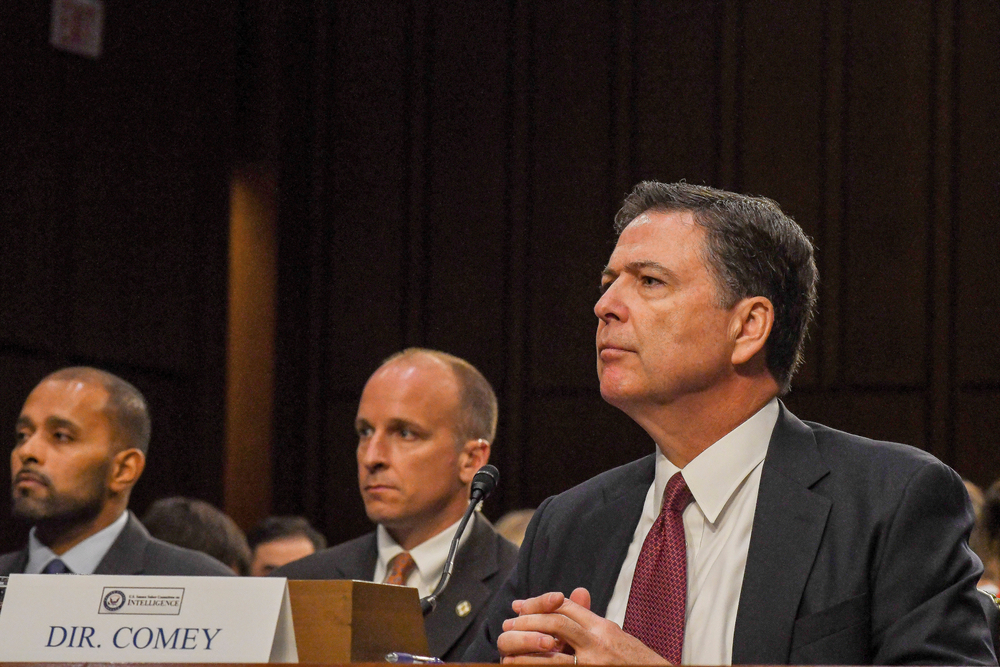Did James Comey Hide the Truth? The 8647 Mystery Explained
James Comey has been a lightning rod for controversy in American politics. Once the Director of the FBI, his career intersected with some of the most consequential events in recent U.S. history — from the Hillary Clinton email investigation to his firing by President Donald Trump. But who really is James Comey, and what’s behind the cryptic number “8647” that some claim connects him to a deeper conspiracy?
Who Is James Comey?
James Brien Comey Jr. is a former American attorney and government official who served as the 7th Director of the FBI from 2013 to 2017. He was appointed by President Barack Obama and previously held positions in the Department of Justice under President George W. Bush.
Comey is best known for:
-
Overseeing the Clinton Email Investigation: In 2016, Comey publicly announced the FBI would not recommend charges against Hillary Clinton for her use of a private email server but criticized her handling of classified information — a decision that drew fire from both Democrats and Republicans.

-
Being Fired by Trump: In May 2017, President Donald Trump abruptly fired Comey, a move that led to the appointment of Special Counsel Robert Mueller to investigate Russian interference in the 2016 election.
-
Becoming a Vocal Trump Critic: After his dismissal, Comey wrote a bestselling memoir (A Higher Loyalty) and became a prominent critic of Trump’s behavior and leadership.
Related: Trump vs Big Pharma: The Price War That Could Cripple the Drug Industry
Related: The 5 Most Hated Politicians of 2025: Scandals, Lies & Backlash
What Is “8647” and Why Is It Linked to Comey?
The number 8647 has circulated online — especially in conspiracy theory forums — as a cryptic reference allegedly connected to Comey and government corruption. But what does it actually mean?
Theories include:
-
Numerical Code: Some claim 8647 is a numerical stand-in for phrases like “Q clearance” or deep state identifiers, though there's no official basis for this.
-
Military or Legal Code: Others point to obscure U.S. codes or case files, but no verified link to Comey or FBI operations has been found.
-
Troll Bait or Meme Culture: In truth, 8647 appears to be part of internet misinformation or disinformation campaigns. It’s frequently mentioned in online spaces that blend political conspiracy theories with coded language to give a false sense of legitimacy.

Is the 8647 Code a Real Thing?
No credible evidence exists tying 8647 to James Comey or any documented FBI operation. It does not correspond to any official file number, legal code, or case designation involving Comey. Most mentions of it stem from anonymous message boards, fringe social media accounts, and conspiracy theory websites.
In short: it’s not a serious thing in any legal, governmental, or official context. It’s part of a wave of numerology-based conspiracy narratives that often attach arbitrary codes to real people to fabricate intrigue.
Related: Is the U.S.-UAE AI Chip Deal a Strategic Masterstroke or a Security Gamble?
Why It Matters
The obsession with vague numerical codes like “8647” reflects a growing trend in modern misinformation. Public figures like James Comey — especially those entangled in politically charged investigations — become lightning rods for unfounded speculation.
It’s important to distinguish verified facts from internet fiction:
-
Comey’s actions as FBI Director are well-documented and heavily scrutinized by both major parties.
-
“8647” has no proven link to any FBI activity or Comey himself.
-
Misinformation undermines public trust in institutions and can distract from real accountability.
Conclusion: Code or Not, 8647 Reflects a Dangerous Trend
Whether “8647” is just a random number or a made-up code, its viral spread shows how easily misinformation can thrive in the digital age. The use of secretive symbols, codes, or numbers to imply hidden truths — without evidence — fuels a toxic ecosystem where opinions masquerade as facts.
This strategy of encoding messages appeals to those who feel they’re “in the know,” creating echo chambers where truth is subjective and verification is optional. It’s not about uncovering facts — it’s about reinforcing belief systems with just enough mystery to make them feel profound.
The more this kind of coded communication is used, the more the public discourse suffers. It divides, distracts, and drowns out credible information. In an era already plagued by disinformation, the romanticization of “secret knowledge” only worsens the divide between reality and conspiracy.
In the case of James Comey and “8647,” the facts are clear — but online, the truth is often drowned out by the loudest code.













